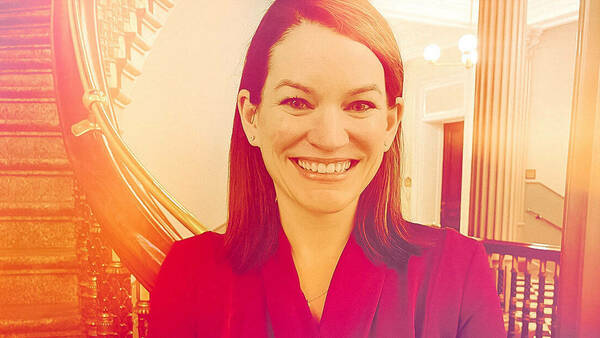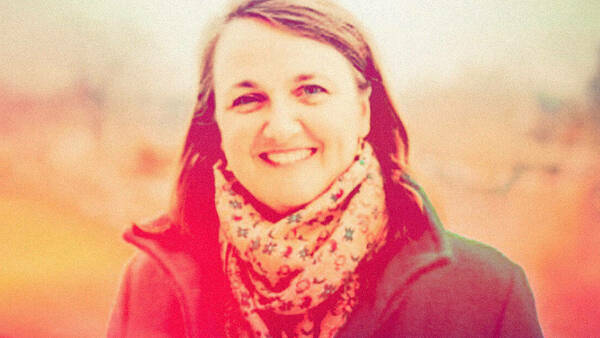Laura Seago ’09 first encountered chronic pain during her senior year at Notre Dame after she suffered an injury while training for a half marathon. Her knees locked up and she limped home in tears.
She struggled with it again after swapping long runs for spin class. Her new fitness routine was fine until she began experiencing sciatica, a shooting nerve pain that coursed through her lower back and legs.
And she suffered through it yet again when the migraines began. They meant 48 hours at a time in a dark room nauseous and crying, experimenting with muscle relaxers and mouth guards, and taking up to 12 Ibuprofen a day or trying $30 migraine pills that did nothing to blunt the pain.
It was then that Seago got in touch with a doctor who specializes in mind-body pain connection and tried his discussion group. And to her surprise, the techniques she learned there actually worked. She learned to keep her migraines at bay, and she could once again run or bike as much as she wanted without hurting.
The experience changed her life—and the course of her career. Seago and two friends who’d had similar experiences co-founded Curable, an online mind-body therapy program that treats chronic pain. Having suffered and recovered herself, she’s passionate about building a business that can help other people in similar situations.
“In six weeks, without any sort of pills or surgery or medical intervention of any kind, I completely got rid of all my chronic pains,” Seago says. “It has really changed my life, and so of course the immediate reaction when something like this happens to you is, ‘why don’t more people know about this? Why didn’t I find out about this sooner? Why did I have to suffer for so long before someone told me this was an option?’”
Bringing Expertise to a Larger Audience
Seago is quick to point out that she and her Curable co-founders—CEO John Gribbin and Head of Tech Erich Luedtke—aren’t devising techniques to manage pain. They’re not doctors, and they don’t claim a high degree of medical expertise.
What they are doing, Seago says, is taking the know-how of various pain management experts and applying it in layman’s terms to reach a larger audience. Curable's scientific advisory board includes physicians and professionals working in a variety of fields, including orthopedics, sports medicine, physical therapy, pain psychology, and neuroscience
“No one had tried to apply marketing and technology skills to this area,” she says. “It was mostly just doctors talking to each other. So we said, we have a different perspective, a different skill set to add to this. There’s no reason we can’t use our skills to scale this and make it more affordable to a larger number of people.”
Addressing Pain from Every Angle
There isn’t one successful approach to treating chronic pain, Seago says. What works for one person might not do much for another. But it all starts with a holistic look at what’s going on in a person’s life.
“We use a bio-pyscho-social approach, which means addressing pain from every angle—tying together what’s happening in your brain, what’s happening in your body, and what’s happening in your life to get this full picture of what’s causing your symptoms and how to relieve them,” she says.
That’s where technology comes in. Clara, Curable’s chatbot, is available on the company’s website and in its app. It asks visitors a few questions about the pain they’re experiencing and starts them off with a free tutorial on pain science. After that, people can decide whether they want to sign up for a paid subscription, which unlocks a variety of exercises that include guided meditations, visualizations, expressive writing, and cognitive behavioral therapy techniques.
“There is definitely merit to each of these techniques individually, but they are much more powerful when they are combined and when they are all directed toward this one goal,” Seago says. “They’re all reinforcing each other, they’re all amplifying each other, they’re all helping you along this journey. We try to expose people to everything and let them dive deeper into what is working for them. Our goal has been to create something that is actually going to work for people.”
Making a Difference
Curable surveys its users to gauge how its offerings work for them. And the results so far are encouraging. After 30 days, about 70 percent report at least some relief from pain, and about 30 percent say their pain is either much better or completely gone.
As the United States navigates a deadly opioid epidemic and doctors increasingly recognize the dangers of over-prescribing pain medication, Seago says she finds it encouraging to help connect people with safe alternatives that can help them manage or eliminate their pain.
“It is not only very satisfying, but also very emotional,” she says. “When you know exactly what an impact it is to feel that burden of chronic pain lifted from your life and you can watch someone else experience that, there’s nothing else like it. It keeps you going. I believe people when they tell us, ‘You gave me my life back,’ because I remember being there.”
To learn more about the work Curable does to address chronic pain, visit curablehealth.com.



